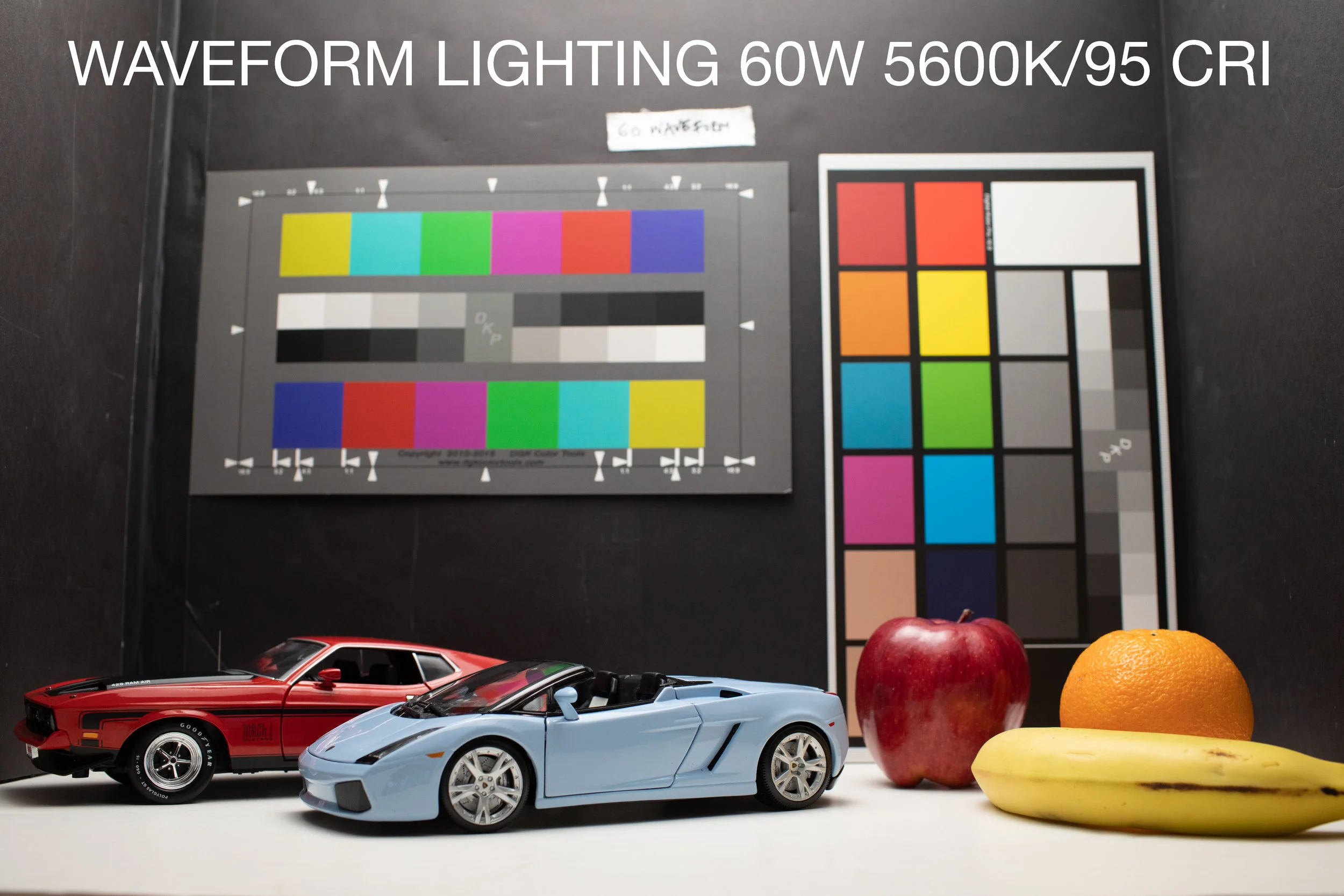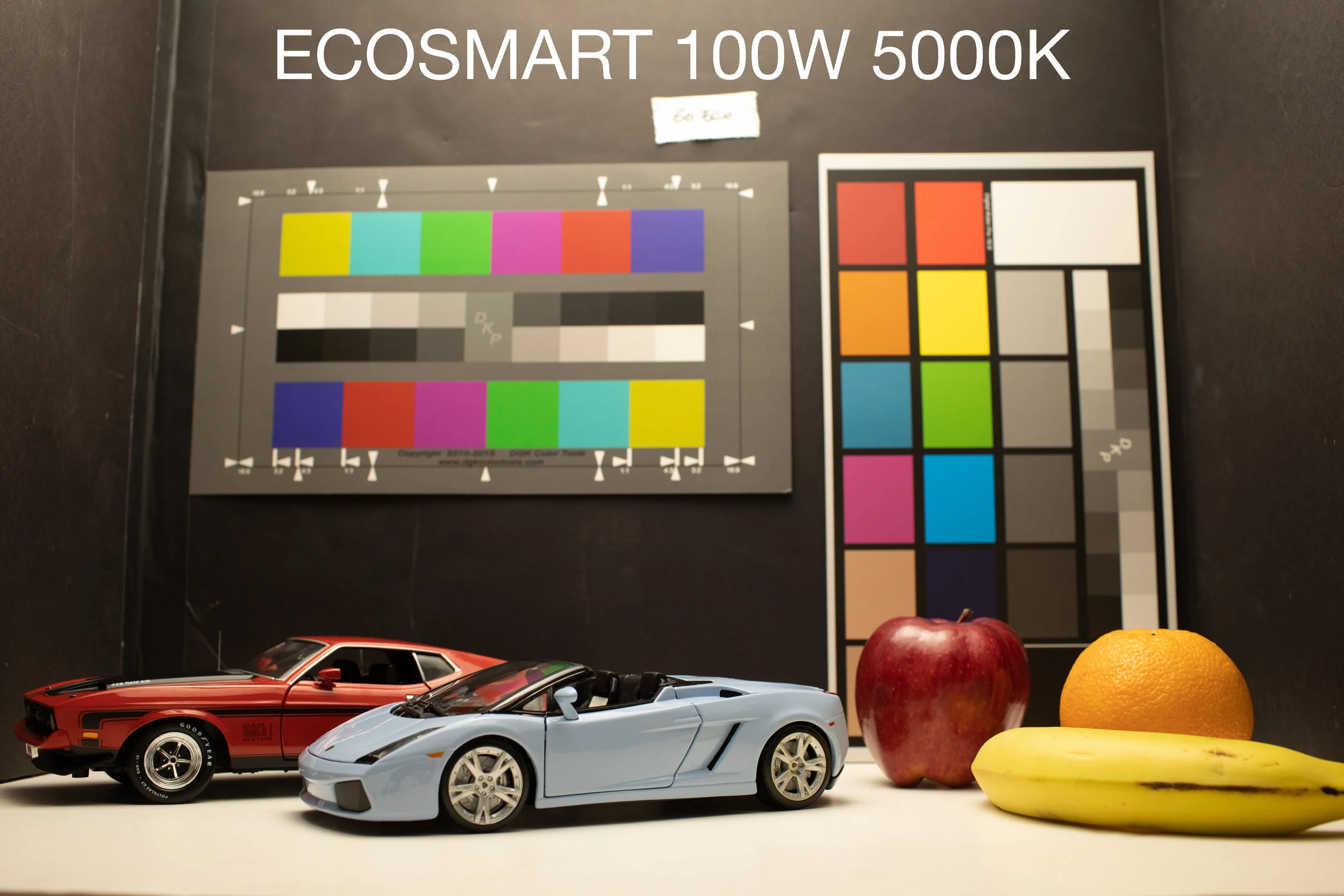LIGHTING TESTS
So at the request of some my friends, here’s a test of various LED bulbs to see which is most suitable for garage lighting.
The testing methodology is in comparison to daylight. How you see your car in the sunlight is how you hope it will look in your garage. Reds will be red and blues will be blue and so forth. As a caveat, some people expect inside or evening lighting to be the color of the traditional tungsten bulbs (3200k) and may be put off by the bluish daylight at night but for the scope of this current test, we are examining daylight bulbs. Thus daylight itself is the gold standard.
White balance on the camera is locked at canon’s daylight setting and rendered in adobe color in lightroom at 5050K and +5 tint. The image may render differently on your browser or phone than it renders on my calibrated monitors but what matters is how each image renders in reference to the original daylight image. Daylight is considered anywhere from 5000-5600 Kelvin and as you will see different manufacturers interpret “daylight” differently. I have diffused the light source to give each picture a similar feel so we can concentrate on temperature (Kelvin) and CRI. To recap, temperature is how blue or yellow an image is and CRI is how even the color spectrum is rendered. With a poor CRI you may find that even if you can get one color right you will discover another color has gone a bit wonky. A high CRI light means all the colors will be evenly matched. A poor CRI you may find that some colors are ok and some colors in particular are off. This is because the spectrum of light is uneven. To the eye in real life, many of these lights will seem identical without a comparison basis. That is because your brain adjusts and tells you that white is white even if it isn’t. Nonetheless you will find that many people can feel that things are off which is why fluorescent office lights developed the bad reputation that they have. Not only will the correct temperature and high CRI light feel better, but any pictures you take under those lights will look right. Again to reiterate, you should check to see if you expect lights to be that warm tungsten color, some people really hate a daylight colored indoor light… If all these images look the same to you, then you can simply buy the cheapest bulbs at home depot, LED lighting has come a long way and most of the bulbs are decent.
So since this a test for garage lighting, I’ve included a couple cars as well as some items that you should be quite familiar with the color of. Also note, the whites, blacks and grays will show tints quite obviously. So here’s daylight from the sun itself.
So first off, some comparisons to professional grade lighting. The kinflo 4 foot 4 bank fluorescent has been a standard fixture on countless movie and TV sets in the last decade. This is not an office fluorescent and at approx $1500 per fixture, it’s not cheap or practical to use in a garage setting. But you can see it’s quite close to actual daylight but it’s a touch bluer or colder. The CRI is obviously good as you would expect from a professional light.
This is from a newer company that I purchased some bulbs from for testing: Waveform lighting. They claim 95CRI and accurate color temperature. Indeed as you can see, this is probably the closest we will come in this testing to actual daylight. I tested it against other film/tv grade lights and the waveform was the most accurate. These bulbs aren’t cheap, but they’re impressive and closer than the kinoflos in temp.
I was intrigued by this CREE high CRI bulb. Cree claims 90+ CRI and CREE has been focused on high quality LED emitters since LEDs started as consumer bulb. While the high CRI claim holds up, I was a little disappointed to find that the CREE bulb is yellower than daylight. It’s not a huge difference and I typically prefer warmer (yellower) than colder but I was surprised to see just how warm their daylight bulb is.
When LED bulbs started to become commonplace, the Phillips bulbs were the first ones I thought were decent enough to recommend. They don’t specify a CRI and I was disappointed to see that the temperature is a bit off and when I manipulate the file to correct the temperature, I see that the CRI is not great either as different colors on the chart are affected differently. It’s not a bad bulb but I would recommend the CREE over this one.
So just for fun I threw in an eco smart bulb from home depot. To my surprise it’s not that much different than the Phillips. It’s not a particularly good bulb, but it’s not awful.
So to summarize, as of 2019, I would rank these bulbs in the following order.
Waveform lighting
CREE 90+ CRI
Phillips
EcoSmart
That being said, here’s the caveats. Waveform lighting as far as I can tell is a recent company without a long track record of quality control or customer support. The bulbs are the most expensive of the ones tested by quite a bit. A BR30 bulb which is probably what many people would use in a garage costs $28. In comparison a CREE BR30 costs around $10 at home depot. If you want the best light available now then waveform is it, but I don’t have enough experience with them to really know if I can recommend the product. It might be really well made and last forever. It might not, I just don’t have any personal experience so I can’t say either way. I can say the bulb I tested easily holds it’s own or beats my professional grade film and TV lights. It’s quite impressive. CREE has been around longer and seems to have a good track record and their claims of high CRI are accurate. That would be my recommendation for most people. If you’re on a budget and you’re not picky than the Phillips bulbs are very reliable and well made. Now to be clear, I haven’t tested the BR30 bulbs, I was testing standard A19 bulbs but I would assume that they are using the same emitters in the BR30 bulbs. As with all things, I would get a couple and see for yourself. It doesn’t matter how accurate it is if it looks bad to your eyes.





